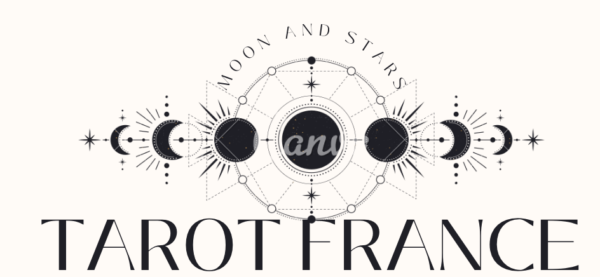
They can provide an opportunity for older adults to connect with peers who have gone through similar struggles, providing a forum to share advice and strategies that have proven successful in managing their addiction. It is possible to have a mild substance use disorder where you might still be able to control it on your own with family support or counseling. Other times it can be more severe and require professional help such as inpatient treatment or medication to recover. Early recognition and treatment are some of the best ways to help anyone struggling with substance abuse issues.

What is elder abuse (abuse of older adults)?
Early intervention strategies such as cognitive-behavioral therapy or family counseling may be beneficial for preventing substance abuse issues among those at high risk for developing them. When seniors lack meaningful relationships or become socially isolated, it can lead to feelings of loneliness, which increases their risk for developing mental health issues like depression – all of which can contribute to higher rates of substance abuse. Unfortunately, elder abuse can take on many different forms, especially in nursing home settings. An analysis of research and literature indicates that physical abuse, such as restraining, hitting, or force-feeding, is the most common type of abuse in long-term care facilities.
About Abuse of Older Persons
Almost all states have mandatory reporting legislation requiring health professionals to report reasonable suspicions of elder abuse. When health professionals suspect elder abuse, they should contact the state office on aging, the ElderCare Locator (800–677–1116), or the National Center on Elder Abuse. In addition, the number and quality of studies varied greatly according to region and cultural group. The majority of studies of elder abuse were conducted in North America, Europe, and Asia, with only two studies identified in Africa.
Resources for Older Adults Struggling with Substance Use Disorders
In these cases, an experienced nursing home abuse lawyer may be able to help you seek justice and financial compensation. Nursing home staff, family, or even strangers can all commit elder financial abuse. However, if an older person has caregivers or lives in a nursing https://ecosoberhouse.com/ home, then self-neglect should not be occurring. Instead, they result from carelessness, understaffing, or a lack of regard for an older person’s health. Understanding the different types of elder abuse and legal protections is key in safeguarding older adults.
Tip Sheet: Preventing Elder Abuse and Neglect in Older Adults

For this reason, seniors who consume alcohol are at an increased risk for accidents, including falls, fractures, and car crashes. Support groups are vital for older adults suffering from substance abuse issues. They offer a safe and comfortable space to talk freely and openly about one’s experiences.
Prevention and intervention studies must also consider cost effectiveness and scalability at the broad levels. We can reduce the risk of elder abuse by putting systems in place that can prevent abuse from the start. For example, we can create community supports and services for caregivers and older people that can reduce the risk factors tied to elder abuse (such as social isolation). We can increase funding to provide training for people who work in aging-related care on the prevention and detection of elder abuse. We can identify ways to empower older people through senior centers and intergenerational programs that will reduce the harmful effects of ageism (biases against or stereotypes about aging that keep us from fully participating in our communities as we grow older). No matter how old we are, we are all entitled to be treated as full members of our communities.
Older adults are being mistreated in multiple settings (homes, nursing homes, assisted living facilities) by family members, friends and neighbors, professionals, and strangers. The EJI provides several scenarios and red flags to help the public understand the five types of abuse. Moreover, the majority of studies of risk factors of elder abuse have used a cross-sectional design, which further hampers substance abuse in older adults the ability to determine the causal relationship between vulnerability risk factors and elder abuse. In recent years, the number of older adults suffering from addiction has risen. This alarming trend is due to a combination of factors — including an increase in access to prescription drugs and alcohol and a decrease in family support and social interaction that occurred during the pandemic.

Office of Justice Programs
- Interpersonal violence also occurs at disproportionately higher rates among adults with disabilities.
- Sometimes paired with neglect, elder abandonment happens when someone who cares for an older person intentionally deserts them.
- The cases are often complex, requiring multiple resource systems to respond.
- Not all people will have the same signs or symptoms of a substance use disorder.
- M-Teams exist in the field of elder abuse, despite a dearth of data regarding the efficacy, sustainability, and cost effectiveness of the M-team approach.
- They can provide an opportunity for older adults to connect with peers who have gone through similar struggles, providing a forum to share advice and strategies that have proven successful in managing their addiction.
Elder abuse is an intentional act or failure to act that harms or risks harming older adults, according to the Centers for Disease Control and Prevention (CDC). Get help for victims of scams and frauds, as well as consumer prevention and… Abuse can happen to any older person — at home, at a relative’s home, or in an eldercare facility. Unfortunately, the situation won’t resolve on its own so you need to be that person’s advocate.
Elder Neglect
Lack of consistency and precision in the assessment of elder abuse may prevent clear understanding of the accurate prevalence and risk and protective factors and impede the development of prevention and intervention programs. Many strategies have been tried to prevent and respond to abuse of older people, but evidence for the effectiveness of most of these interventions is limited at present. This review highlights the epidemiology of elder abuse and the complexities of research and practice. National longitudinal research is needed to better define the incidence, risk and protective factors, and consequences of elder abuse in diverse racial and ethnic populations.

